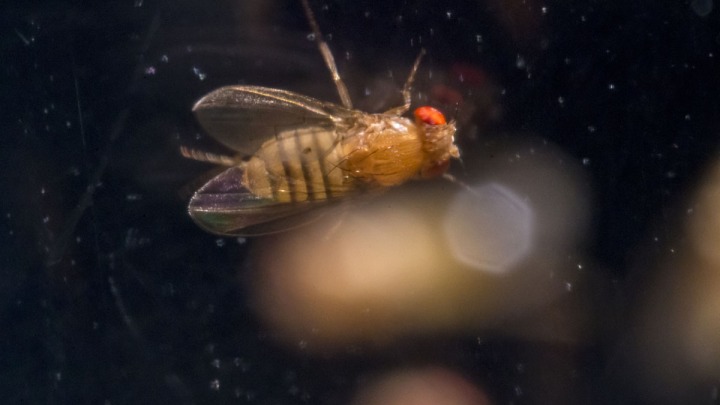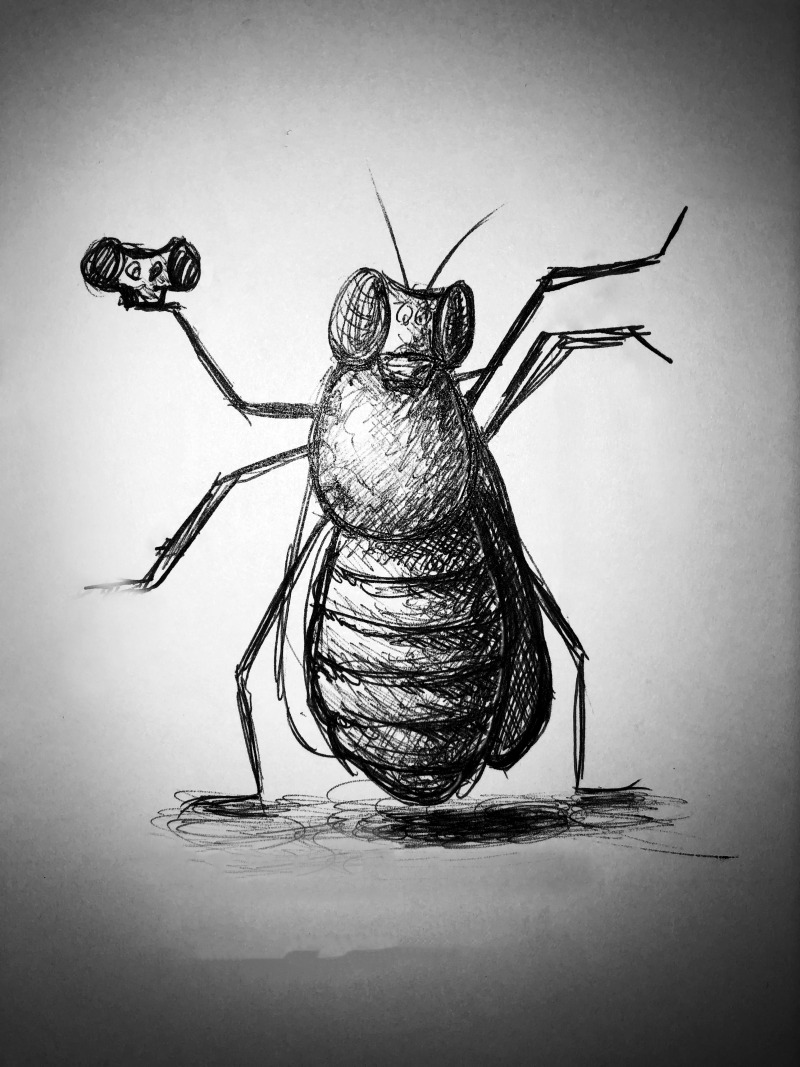
A ‘timeless’ tradition: How fly genes get their names
When scientists discover a new phenomenon, they often get to name it. For researchers who study the model system Drosophila melanogaster, or fruit flies, that means participating in a long tradition that is a hallmark of the field’s culture.
Drosophila researchers are known for selecting descriptive — and sometimes witty — names for the genes they discover. The tradition dates back to the research of Thomas Hunt Morgan, who noticed that a gene mutation he was studying resulted in white eyes in his flies, and named the gene “white.” Morgan’s pioneering research using flies went on to win the first of six Nobel Prizes that have been awarded (so far) for Drosophila research.
Since Morgan’s initial research, Drosophila researchers have continued to choose gene names that relate to the physical or physiological characteristic associated with the mutant version of the gene. For example, mutations in the gene timeless — which was part of the research that won the 2017 Nobel Prize in Physiology or Medicine — result in flies that cannot distinguish between day and night, losing track of their circadian rhythm.
The names of fly genes can also veer into more humorous territory. And like most researchers in their field, the faculty members at the University of Michigan Life Sciences Institute have a few favorites.
Naming the function (with a bit of fun)

Yukiko Yamashita, Ph.D., uses fruit flies as a model organism to investigate how stem cells divide. The mechanisms that regulate stem cell division remain poorly understood, and have implications for cancer and other diseases.
“One gene that immediately jumps to mind is tinman,” she says. “This gene encodes a transcription factor that is required for heart development. Thus, the mutant has no heart — like the Tin Man from ‘The Wizard of Oz’.”
Another of Yamashita’s favorite’s is the Van Gogh gene, which is required for planar polarity. This polarity makes sure that all hairs on a fly’s back point in the same direction. In the absence of this gene, the hairs form swirls similar to the style of many of the artist’s paintings, Yamashita explains.
Bing Ye, Ph.D., studies the development of neurons in fruit flies to discern how defects in neuronal development contribute to brain disorders such as Down syndrome.
Ye’s personal favorite is the gene hamlet. “A defect in this gene affects the development of cells descended from IIB progenitor cells — so, IIb or not IIb.”
Cheung-Yu Lee, Ph.D., investigates the mechanisms that enable neural stem cells to self-renew and the implications of those mechanisms in neurodegenerative diseases. He likes to highlight the genes in the hedgehog pathway, which was first named for a mutation that resulted in a short and spiky larval cuticle (the protective case that surrounds fly larvae). Many homologs of this pathway were later discovered in vertebrates — including humans — and were similarly named.
“It’s an example of both the creativity of the original discovers and the genes’ evolutionary conserved roles across species,” Lee says.
Creative connections
This naming tradition has led to some controversy when human genes take on the names of their Drosophila homologs. The whimsical-sounding sonic hedgehog gene, for example, can cause severe and sometimes deadly malformations in the brain when mutated in humans. A few such human genes have been renamed, to avoid seemingly insensitive conversations between doctors and patients when discussing genetic disorders.
But beyond its role in the culture and tradition of Drosophila research, the practice also has scholarly value. Descriptive gene names are more likely to stick in a researcher’s mind than, say, an assortment of a few letters and numbers.
And since many genes are conserved across species, remembering the name of a gene that causes a particular physiological response is useful. If researchers saw a same response in another species, they could more quickly determine if the species had a homologue to the gene discovered in flies.
Thus, the naming convention does not just serve as an important part of the research culture — it provides a useful tool to connect discoveries about fundamental processes of life across species.


